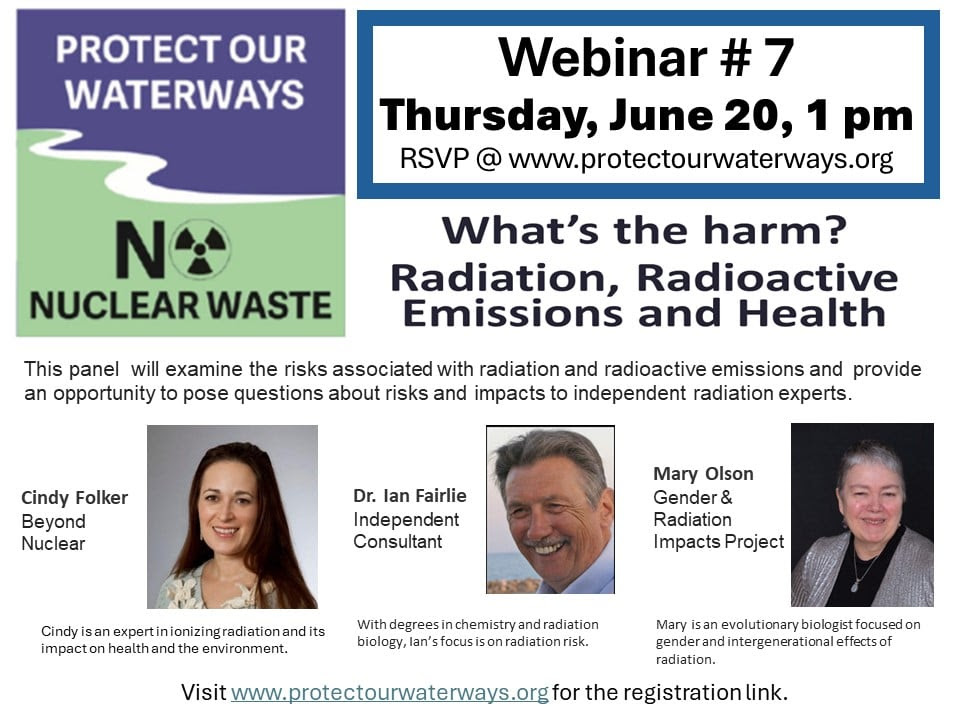Secret Plutonium Fuel Shipment Planned for Japan’s Takahama Reactors

Tokyo, 6 June 2017 – With today’s restart of the Takahama 3 reactor in Fukui Prefecture, Greenpeace revealed that the nuclear operator Kansai Electric and the French nuclear company AREVA are planning a secret plutonium fuel shipment from France to the Takahama plant. Plutonium fuel (MOX) reduces the safety of the reactor, increasing both the risk of a severe accident and its radiological consequences. The shipment is scheduled to depart Cherbourg France on 7 July.
This also presents serious security issues, both as it is a potential terrorist target and that the plutonium in the MOX fuel is direct use nuclear weapons material. Due to these risks, the U.S. State Department and other agencies are required to approve the security plan for plutonium shipments to Japan under the terms of the US – Japan Peaceful Nuclear Cooperation Agreement of 1988. The Trump administration has approved this shipment, despite the increasingly unstable conditions in the region.
“The last thing Northeast Asia needs at this time, or at any time, is more nuclear weapons-usable material. Last year, the U.S. removed 331 kilograms of plutonium from Japan due to security risks, while ignoring the 10 tons of material that remained. One year later, at least 500 kg more plutonium is being approved for delivery to Japan. Plutonium is not your normal cargo to be traded as a commodity. It can be used as nuclear bomb material. Japan’s bankrupt plutonium program, and its endorsement by the Trump administration, is a further threat to the peace and security of this troubled region,” said Shaun Burnie, nuclear specialist at Greenpeace Germany in Tokyo.
The shipment comes at a time when Northeast Asia is already destabilized due to threats on the Korean peninsula, the spectre of military conflict, and the increasing risks of nuclear weapons proliferation. Japan’s decades long and multibillion dollar plutonium program has failed to ensure energy security for Japan, but it has led to the nation accumulating over 48 tons of plutonium, 10 of which is stored in Japan, and the rest in the UK and France.
This shipment will consist of at least 16 plutonium fuel (MOX) assemblies, which are planned to be loaded into the Takahama 4 reactor during its next refueling, expected in 2018. The amount of plutonium in the shipment due to leave France next month is estimated to range from between 496-736kg – as little as 5kg is sufficient for one nuclear weapon.
Two lightly armed British vessels, the Pacific Egret and Pacific Heron, are scheduled to leave the French port of Cherbourg on 7th of July, and are expected to arrive in Takahama between mid-August and early September, depending on the route chosen. One of the ships will transport the plutonium fuel, and the other will act as ‘armed escort’.
Both Takahama 3 and 4 already have plutonium MOX fuel in their cores, with 24 and 4 MOX assemblies loaded into each reactor respectively.
“KEPCO’s unjustified restart of the Takahama 3 reactor is made worse by the fact that they are planning a secret plutonium shipment which will increase the amount of dangerous plutonium MOX in their reactors. The Takahama reactors already pose an unacceptable threat to the people of Fukui and Kansai region. This will be compounded by the even greater usage of plutonium MOX fuel,” said Shaun Burnie, Senior Nuclear Specialist with Greenpeace Germany (currently based in Japan).
Due to the severity of the impacts of a nuclear disaster involving MOX fuel, citizens groups, including Greenpeace, have demanded that AREVA release vital safety data on the MOX fuel produced for Japan, including for the Fukushima Daiichi 3 reactor and the Takahama reactors, due to evidence of flawed production and quality control during manufacture.(1) To date, AREVA has failed to release any of the safety data. AREVA also refused to release the same data for MOX fuel loaded into the Fukushima Daiichi reactor 3 in 2000. The AREVA company which has suffered a near meltdown of its business in recent years, is desperate to secure more MOX fuel contracts with Japan, which suffered as a direct consequence of the 2011 Fukushima Daiichi accident leading to the shutdown of the Japanese reactor fleet.
Of the five reactors now operating in Japan, three are operating with varying amounts of plutonium MOX fuel. There is a possibility of additional MOX fuel being in the shipment for other Japanese reactors – Ikata 3 is operating with MOX fuel, and the Genkai 3&4 will operate with MOX fuel if they restart before March 2018.
Notes:
1 – Letter to AREVA Japan Calling for Disclosure of MOX Fuel Quality Control Data, 2016-01-28, and FUNDAMENTAL DEFICIENCIES IN THE QUALITY CONTROL OF MIXED-OXIDE NUCLEAR FUEL, Fukushima City, Japan, March 27th 2000
2 – Tokai plutonium shipment March 2016
http://m.greenpeace.org/japan/ja/high/news/press/2017/pr201706061/#.WTcEEm0pf-M.facebook
Plutonium from Japan to be disposed of underground in New Mexico
U.S.-bound plutonium that has recently been shipped out of Japan will be disposed of at a nuclear waste repository in New Mexico after being processed for “inertion” at the Savannah River Site atomic facility in South Carolina, according to an official of the National Nuclear Security Administration.
“The plutonium will be diluted into a less sensitive form at the SRS and then transported to the Waste Isolation Pilot Plant (WIPP) for permanent disposal deep underground,” said Ross Matzkin-Bridger in charge of the operation at the NNSA, a nuclear wing of the Department of Energy.
“The dilution process involves mixing the plutonium with inert materials that reduce the concentration of plutonium and make it practically impossible to ever purify again,” he told Kyodo News in a recent phone interview.
The official made the remarks ahead of the latest Nuclear Security Summit, sponsored by President Barack Obama, which began Thursday in Washington.
The fourth such meeting of world leaders is focused on how to secure weapons-usable nuclear materials all over the globe. The summit started after Obama’s 2009 speech in Prague, in which he called for “a world without nuclear weapons” and for which he was awarded a Nobel Peace Prize later that year.
At the previous summit in the Netherlands in March 2014, Prime Minister Shinzo Abe agreed to return plutonium and highly enriched uranium upon request from the Obama administration, which is seeking to strengthen control of nuclear materials.
The removal of 331 kilograms of plutonium and hundreds of kilograms of HEU from the Fast Critical Assembly, a research facility located in the village of Tokai, Ibaraki Prefecture, was completed before the Nuclear Security Summit kicked off.
Japan received the plutonium and HEU fuels from the United States, Britain and France from the late 1960s to early 1970s for research purposes in the name of “Atoms for Peace.”
The nuclear fuel delivery, however, has generated controversy in South Carolina since it was reported that it was en route to the U.S. government-run SRS facility in the state.
South Carolina is “at risk of becoming a permanent dumping ground for nuclear materials,” Gov. Nikki Haley said in a recent letter to Energy Secretary Ernest Moniz, calling for the freight to be stopped or rerouted.
The final disposal at the WIPP, as described by Matzkin-Bridger, may defuse these local concerns in South Carolina.
The WIPP is a repository — about 660 meters underground — for permanently storing nuclear waste created by the U.S. government’s nuclear weapons program.
“The Department of Energy has signed a Record of Decision to implement our preferred option to prepare 6 metric tons of surplus plutonium from the SRS for permanent disposal at the WIPP near Carlsbad, New Mexico,” Matzkin-Bridger explained. “This includes all foreign plutonium that we bring to the United States under our nonproliferation programs.”
The HEU from Japan’s FCA will be “down-blended” to low enriched uranium at the Y-12 National Security Complex in Oak Ridge, Tennessee, according to the official. In the future, LEU will be used for research purpose at research reactors both in the U.S. and Japan, possibly including the FCA.
“This project was accomplished on an accelerated timeline well ahead of schedule, thanks to the hard work and strong cooperation from both sides,” said a U.S.-Japan joint statement released Friday on the sidelines of the Nuclear Security Summit.
“It furthers our mutual goal of minimizing stocks of HEU and separated plutonium,” the document added, emphasizing the importance of the operation in strengthening nuclear security.
In the statement, the Japanese government made a new pledge to remove and transfer HEU fuels from the Kyoto University Critical Assembly (KUCA), another Japanese research institute, to the United States for down-blending and “permanent threat reduction.”
“If the KUCA’s HEU reactor is successfully converted to a LEU unit, it will have a significant meaning for other reactors in the U.S. and European nations, which are pursuing to convert reactors for LEU,” Hironobu Unesaki, a professor at Kyoto University, said. “The KUCA could provide academic outputs for future LEU conversion process worldwide.”
Officials and specialists in both nations have praised the bilateral cooperation, which aims to reduce the threat of nuclear terrorism through securing sensitive materials.
However, the materials recently transferred from Japan are only the tip of the iceberg. Currently, Japanese utilities possess over 47 metric tons of separated plutonium, which is equivalent to about 6,000 nuclear bombs.
At the last Nuclear Security Summit two years ago, Abe restated the nation’s international promise not to possess any plutonium that it has no use for. But the country’s stockpile of the nuclear material has since slightly increased.
A recent court injunction to suspend the operation of two plutonium-consuming reactors in Fukui Prefecture has made a solution for the plutonium problem more elusive.
http://www.japantimes.co.jp/news/2016/04/02/national/politics-diplomacy/plutonium-japan-disposed-underground-new-mexico/#.Vv80Iiraw3k.facebook
-
Archives
- June 2024 (101)
- May 2024 (373)
- April 2024 (366)
- March 2024 (335)
- February 2024 (345)
- January 2024 (374)
- December 2023 (333)
- November 2023 (342)
- October 2023 (366)
- September 2023 (353)
- August 2023 (356)
- July 2023 (362)
-
Categories
- 1
- 1 NUCLEAR ISSUES
- business and costs
- climate change
- culture and arts
- ENERGY
- environment
- health
- history
- indigenous issues
- Legal
- marketing of nuclear
- media
- opposition to nuclear
- PERSONAL STORIES
- politics
- politics international
- Religion and ethics
- safety
- secrets,lies and civil liberties
- spinbuster
- technology
- Uranium
- wastes
- weapons and war
- Women
- 2 WORLD
- ACTION
- AFRICA
- Atrocities
- AUSTRALIA
- Christina's notes
- Christina's themes
- culture and arts
- Fuk 2022
- Fuk 2023
- Fukushima 2017
- Fukushima 2018
- fukushima 2019
- Fukushima 2020
- Fukushima 2021
- general
- global warming
- Humour (God we need it)
- Nuclear
- RARE EARTHS
- Reference
- resources – print
- Resources -audiovicual
- World
- World Nuclear
- YouTube
-
RSS
Entries RSS
Comments RSS



